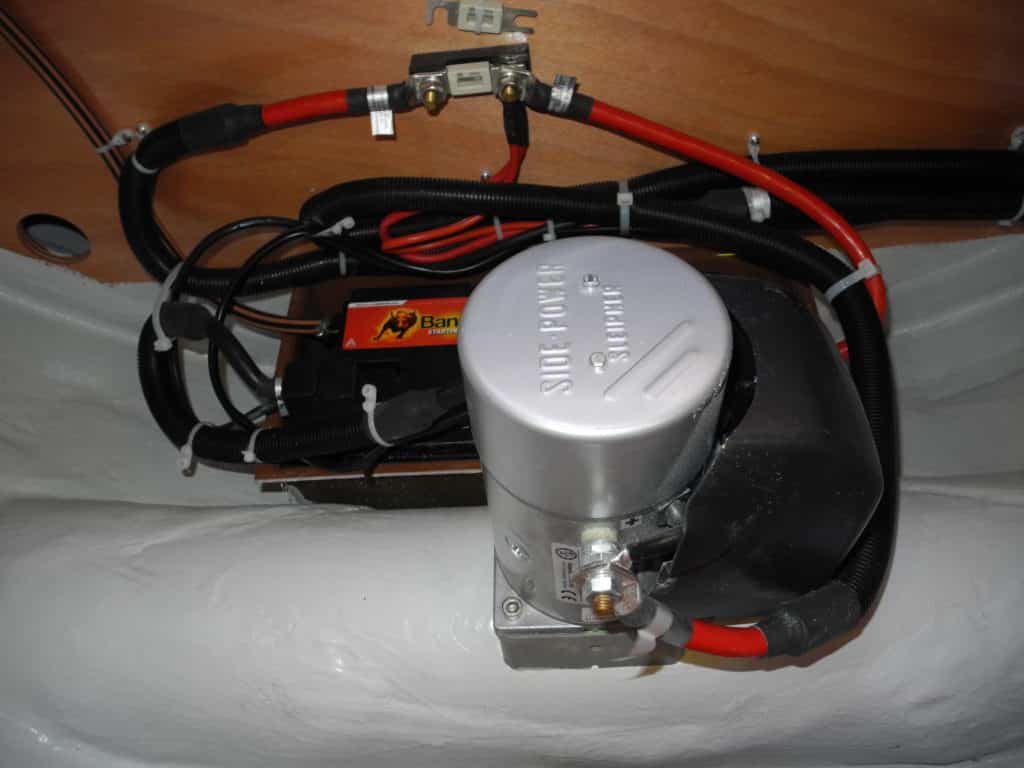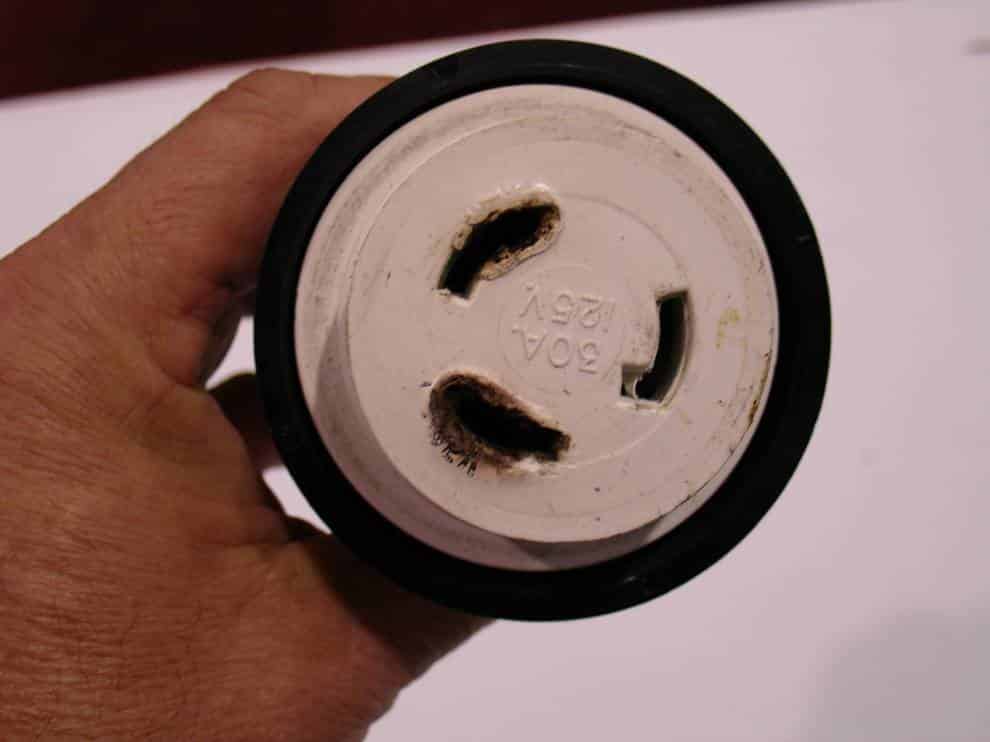
Spring has sprung, so now’s the time to head down to the boat and get the preparations underway for summer fun. Among the many things you need to clean, tighten, repaint and adjust, your electrical system needs attention to make sure that it’ll give you reliable, safe service and not leave you hanging powerless at the dock.
First on the maintenance to do-list is to assess terminal tightness and protection. Uncovered electrical terminals on equipment such as the alternator, starter motor, bow thruster and anchor windlass are one of the areas often overlooked by boatbuilders, marine technicians and boat owners alike that can wreak havoc in very short order if not dealt with before the worst happens. In each of these applications, you are dealing with relatively high electrical current that can make sparks really fly if left unattended.
Each of these termination points needs to have a protective rubber or plastic boot over the positive terminal. These terminals need protection so the wire lug doesn’t accidentally come in contact with the equipment from which it protrudes. A positive lug in contact with an alternator, starter motor or bow-thruster drive motor can cause a sail drive or thruster lower leg to dissolve due to electrolytic corrosion in less than 24 hours! While you’re inspecting the boot, take a minute to get a properly sized wrench, and make sure the nut on the terminal is tight and corrosion-free. Actually, a good look at all your boat’s electrical connections to make sure they’re tight and corrosion-free should be a part of your spring commissioning plans.
Jammed Motors
Motors are unique in their electrical fault properties. Devices with moving parts — such as bilge blower fans and pumps, and in some cases macerator pumps — are all vulnerable to a fault known as a “locked rotor.” This occurs when the moving part jams but power continues to flow to the motor, causing heat to build up.
In the case of newer macerator pumps, the issue has been resolved by using thermal circuit breakers that will shut off the power to the motor until the plugged system is repaired. In the case of virtually every other small DC motor on board, the motor must rely on a fuse installed nearby that is rated properly to blow and shut things down in time to prevent a fire.
The majority of motor circuits I check on board are overfused, however, meaning that the fuse is rated for more amperage than what the motor manufacturer recommends. This fuse rating is almost always found right on the motor’s label. Make sure that the fuse used in the power supply line is not rated at even 1 amp more than that specified by the manufacturer.

Hold Your Ground
Battery chargers and inverters, or inverter chargers, have a case-grounding requirement if they have metal cases. The American Boat & Yacht Council requires that these ground wires be sized at no smaller than one size less than the DC positive wire coming out of the device. What we see more commonly in the field are inverters with no grounding for the case, as shown in the photo on page 86. The lug shown on the Heart inverter just below the black DC connecting cable is what we find more commonly — in other words, with no wire connected.
The inverter or charger will function perfectly with this ground wire disconnected. But, if the rubber boot on the positive terminal gets violated and there is ever a DC-positive-to-case short circuit, the AC grounding wire (think green wire) will get called into action to carry the short circuit back to the source of power and trip a circuit breaker or blow a fuse. When this occurs, the green grounding wire is tasked with carrying more power than it was designed for, and it will burn up long before a fuse blows or a breaker trips. It goes without saying that onboard fires must be avoided at all costs.
Heart of the System
Your batteries are the heart of your boat’s low-voltage DC electrical system. This is an area where a lot of mistakes get made that can impact your safety and the reliability of your electrical devices.
ABYC standards are a bit tougher when it comes to battery installation than European standards, at least from what I’ve seen on many of the CE-marked boats I’ve inspected that were imported to the United States. For example, wing nuts, which often come with a new battery, shouldn’t be used, yet I recently found them in use on a brand-new CE-marked boat. Again, these are not compliant with the latest ABYC standards. In fact, wing nuts are now not to be used on wires sized 6 AWG or greater, based on ABYC Standard E-10. The reason is simple: They tend to come loose and could cause an arc and overheating, possibly even shutting down your electrical system completely or setting fire to nearby materials.
ABYC recommends replacing these with hex nuts and lock washers to eliminate this potential problem. Standards also require insulating boots over the positive terminals to prevent anything from coming in contact with them. Above and beyond that, ABYC recommends that batteries be installed in compartments made of material that won’t be damaged by exposure to the batteries’ electrolytes, should the battery spill for some reason. Ideally, a battery should be properly secured in a case made from fiberglass or some similar material, with both the positive and negative terminals covered with insulating covers, all in accordance with current U.S. standards.
One Last Thing
Finally, one of the biggest sources of trouble at marinas are the shore-power pedestals. Let’s face it, they live a tough life. A typical power outlet is out in the weather year-round, bouncing about on a dock 24/7. Such conditions are destructive for anything electrical. And the same goes for your shore-power cord. Check both ends as part of your spring inspection. If you see any signs of melting or burning, it’s time to replace the ends of the cord or get a new cord. Following these recommended checks this spring will go a long way toward keeping you sailing safely this summer.
Ed Sherman is vice president and education director for the American Boat & Yacht Council, and a frequent CW Boat of the Year judge and contributor.








